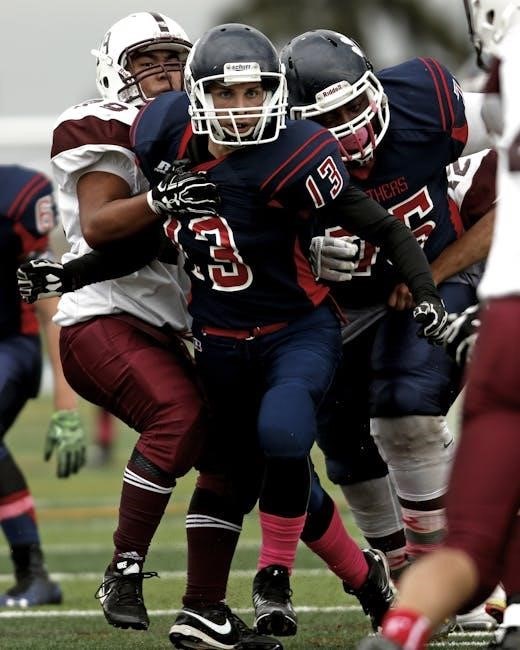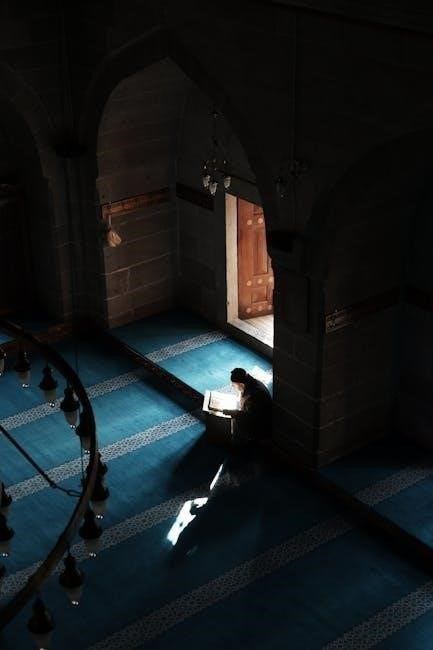Holden Evening Prayer PDF⁚ A Comprehensive Guide
This guide explores Holden Evening Prayer, a widely used liturgical service․ It details its origins, structure, key components (liturgy, hymns, prayers), musical arrangements by Marty Haugen, and accessibility via various online resources․ Discover its theological context and diverse adaptations․
Origins and Composition of Holden Evening Prayer
Holden Evening Prayer, a cherished liturgical resource, finds its genesis in the winter of 1985-1986․ Composer Marty Haugen crafted this service during a musical residency at Holden Village, a secluded retreat nestled in the Cascade Mountains of Washington State․ The tranquil setting and the spiritual community profoundly influenced Haugen’s creative process, shaping the prayer’s reflective and contemplative tone․ Drawing inspiration from the Book of Common Prayer and the Revised Common Lectionary, Haugen seamlessly blended traditional liturgical elements with contemporary musical sensibilities․ The result is a service that resonates deeply with diverse congregations, fostering a sense of peace and shared devotion․ Its enduring popularity stems from its accessibility and adaptability, making it suitable for various liturgical settings and denominational traditions․ Holden Evening Prayer’s composition reflects a commitment to both theological richness and musical beauty, ensuring its continued relevance in contemporary worship․
The Holden Evening Prayer Service⁚ A Detailed Look at its Structure
Holden Evening Prayer unfolds as a thoughtfully sequenced liturgical experience․ Typically, the service commences with a Service of Light, often incorporating a processional, setting a contemplative mood․ This is followed by a period of thanksgiving, acknowledging God’s blessings throughout the day․ The service then progresses to the heart of the liturgy, which may include psalmody, scriptural readings, and intercessions․ These elements are carefully chosen to resonate with the themes of evening reflection and preparation for rest․ The inclusion of canticles and hymns, often featuring Haugen’s own compositions, adds a layer of musical richness to the spiritual experience․ A prominent feature is the Lord’s Prayer, a cornerstone of Christian devotion, often recited communally․ The service concludes with a final blessing, leaving participants with a sense of peace and spiritual renewal․ The flexible structure allows for adaptations based on specific needs and preferences of the worshipping community, ensuring its continued use across various contexts․
Key Components of the Service⁚ Liturgy, Hymns, and Prayers
The heart of Holden Evening Prayer lies in its carefully chosen blend of liturgy, hymns, and prayers․ The liturgy provides a framework for the service, guiding participants through a structured sequence of actions and words․ These actions often involve lighting candles, symbolizing the transition from day to night and the presence of God․ The hymns, often composed or arranged by Marty Haugen, are selected for their lyrical beauty and theological depth․ They serve to express gratitude, reflection, and supplication, enhancing the spiritual atmosphere․ The prayers, both spoken and sung, are integral to the experience, offering opportunities for personal and communal confession, thanksgiving, and petition․ The Lord’s Prayer, a universal Christian prayer, is frequently included, uniting participants in a shared expression of faith․ The careful selection and arrangement of these components ensure that Holden Evening Prayer provides a rich and meaningful experience of worship, fostering a sense of peace and spiritual connection․ The use of both traditional and contemporary elements makes it accessible to a diverse audience․
The Music of Holden Evening Prayer⁚ Haugen’s Composition and Arrangements
Marty Haugen’s significant contribution to Holden Evening Prayer is undeniable․ His musical compositions and arrangements are integral to the service’s distinctive character․ Haugen, known for his contemporary liturgical music, skillfully blends traditional hymnody with contemporary styles, creating melodies and harmonies that resonate deeply with worshippers․ The music in Holden Evening Prayer is not merely accompaniment; it is an active participant in shaping the spiritual experience․ The carefully crafted melodies, harmonies, and rhythms evoke a sense of peace, reflection, and joy․ Haugen’s approach reflects a sensitivity to the liturgical context, ensuring that the music enhances the prayerful atmosphere without overshadowing the theological message․ The musical selections, whether original compositions or arrangements of existing hymns, are chosen to complement the service’s themes and intentions, amplifying the emotional and spiritual impact of the liturgy and prayers․ The accessibility of the music contributes to the widespread use and enduring popularity of Holden Evening Prayer․
Accessing Holden Evening Prayer⁚ Download Options and Resources
Finding resources for Holden Evening Prayer is straightforward․ Many websites offer downloadable PDFs containing the complete service, including the order of service, liturgical texts, hymns, and prayers․ These PDFs provide a convenient and readily accessible format for personal use or congregational worship․ Searches using keywords like “Holden Evening Prayer PDF,” “Holden Evening Prayer download,” or “Holden Evening Prayer text” readily yield numerous results․ Furthermore, various online music retailers often sell digital copies of the musical scores, allowing for use with instrumental accompaniment or choral arrangements․ Church websites and online liturgical resource repositories frequently feature Holden Evening Prayer materials, often incorporating additional resources such as suggested readings or reflections; It’s advisable to check copyright information before distributing or reproducing any downloaded materials․ Remember to always respect intellectual property rights when accessing and using these resources․ This ensures responsible and ethical use of this widely valued liturgical service․
Holden Evening Prayer’s Theological Underpinnings and Context
Holden Evening Prayer is deeply rooted in Christian theology, drawing heavily from the Book of Common Prayer and the Revised Common Lectionary․ Its structure reflects a traditional liturgical framework, emphasizing themes of gratitude, reflection, and anticipation․ The service incorporates elements of confession, forgiveness, and the assurance of God’s grace․ The use of scripture readings provides theological depth and context, often focusing on themes of light and darkness, hope and despair, and God’s unwavering presence․ The hymns and prayers selected typically express sentiments of praise, adoration, and trust in God’s guidance․ The overall atmosphere fostered is one of quiet contemplation and peaceful surrender to God’s will․ The service’s creation in the context of Holden Village, a Christian retreat center, highlights its emphasis on community and shared spiritual experience․ Its enduring popularity suggests a resonance with diverse Christian traditions and their shared values and beliefs, providing a framework for meaningful evening worship․
Variations and Adaptations of Holden Evening Prayer
While the core structure of Holden Evening Prayer remains consistent, its adaptability allows for diverse applications across various liturgical settings and denominational contexts․ Congregations often tailor the service to their specific needs and preferences․ This might involve substituting hymns or prayers with alternative selections that resonate more deeply with their community’s unique character․ The choice of scripture readings might also be adjusted to align with the lectionary cycle or to emphasize particular theological themes relevant to the congregation’s current focus․ Some congregations might incorporate additional elements, such as intercessory prayers, special musical performances, or readings from non-biblical sources․ The flexibility inherent in the service’s design allows for creativity without compromising its essential theological foundations․ Such modifications enhance its relevance and appeal across a wide range of worship styles and traditions, making it a versatile resource for diverse communities of faith․
Holden Evening Prayer in Different Liturgical Settings
Holden Evening Prayer’s adaptability makes it suitable for diverse liturgical settings․ Its use extends beyond specific denominations, finding a home in churches with varying worship styles, from traditional to contemporary․ The service’s structure, readily adaptable to different preferences, allows for seamless integration into various liturgical calendars․ The selection of hymns and prayers can be adjusted to complement the overall tone and focus of the particular service․ In some settings, Holden Evening Prayer may serve as a standalone evening service, while in others, it might form part of a larger liturgical event, perhaps preceding a meal or a period of fellowship․ Its inherent flexibility ensures its relevance in settings emphasizing a contemplative, reflective atmosphere, as well as those with a more participatory and vibrant style of worship․ The service’s ecumenical nature promotes its use in interfaith gatherings or events seeking to foster unity and common ground among different Christian traditions․
The Legacy and Continued Use of Holden Evening Prayer
Holden Evening Prayer’s enduring legacy stems from its accessibility and adaptability․ Its simple yet profound structure, combined with Haugen’s evocative music, has resonated deeply with congregations worldwide․ The service’s enduring popularity is evident in its continued use in diverse liturgical settings, reflecting its capacity to transcend denominational boundaries․ Its adaptable nature allows for customization, ensuring its relevance across various cultural contexts and worship styles․ The readily available PDF versions further contribute to its widespread usage, facilitating easy access and distribution amongst communities․ Many churches continue to incorporate Holden Evening Prayer into their regular worship schedules, testament to its enduring spiritual power and its ability to foster a sense of community and shared faith․ This consistent use demonstrates a lasting impact on contemporary Christian worship, solidifying its place as a significant contribution to modern liturgical practice․ Its continued relevance suggests a lasting appeal that extends beyond its initial creation, ensuring its continued use for generations to come․



Be the first to reply